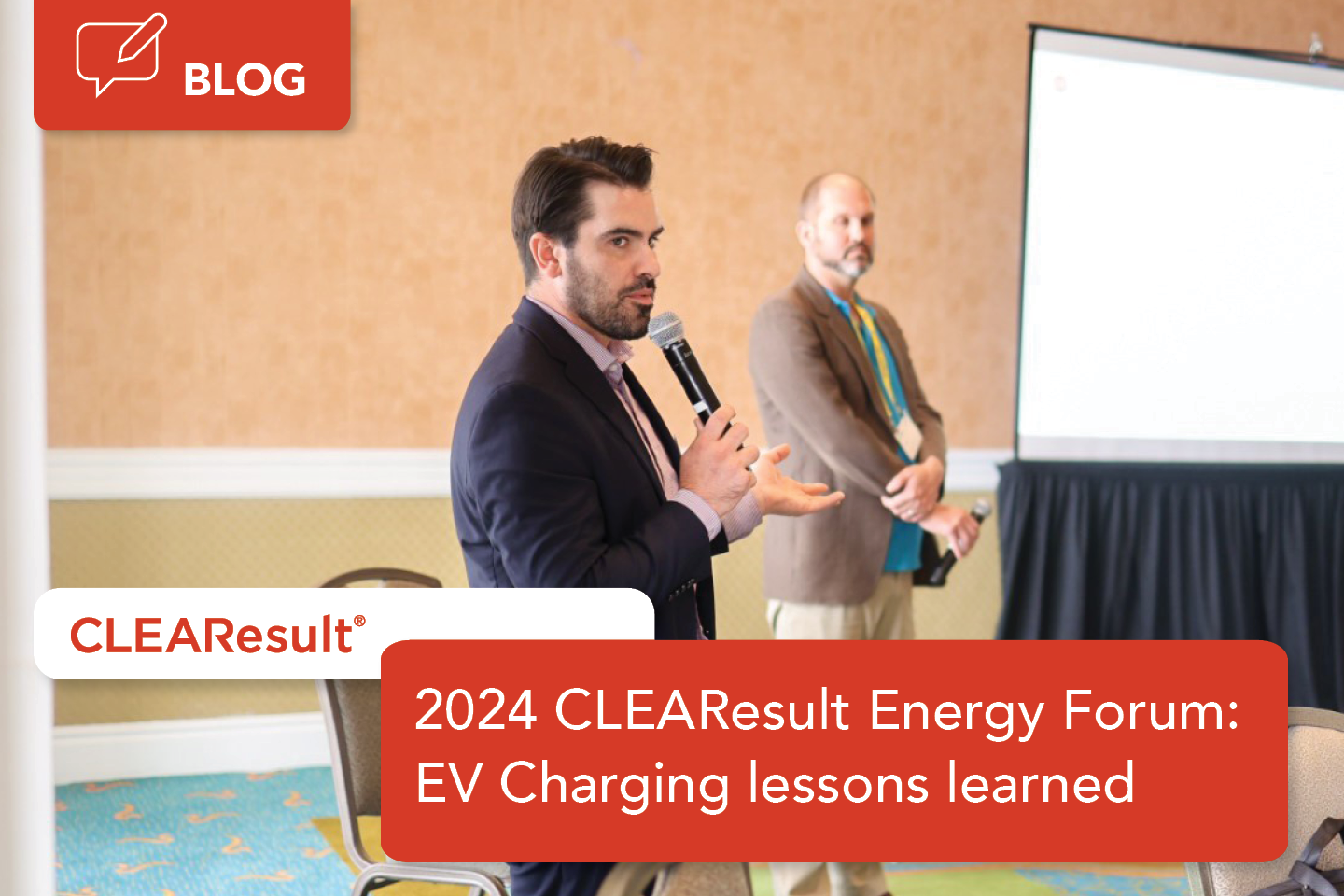Crawl, Walk, Run: The evolution of EV charging programs

With millions of electric vehicles (EVs) on the road, utilities are at a pivotal moment—managing changing charging demands while ensuring grid reliability. Expanding EV charging programs beyond basic support presents an opportunity to improve customer service and enhance grid efficiency. At the 2024 CLEAResult Energy Forum, industry experts discussed how utilities can shift from foundational support (“crawl”) to managed charging (“walk”) and future-ready solutions like Vehicle Grid Integration (VGI) technology (“run”). Utilities can apply these strategies to stay ahead of growing EV demand and prioritize grid reliability as adoption accelerates.
Technical assistance for multi-family and fleet charging
One of the key insights was the importance of technical assistance for multi-family housing and fleet charging programs. These sectors often face unique challenges in the “crawl” phase of EV charging. Utility involvement—from helping with project planning to providing information on incentives—can support property managers and fleet operators in making informed decisions. This assistance is critical in avoiding overbuilding and reducing unnecessary costs, especially when scaling up charging solutions.
Level 1 and managed charging reduces grid stress and boosts participation
In the “walk” phase, utilities can explore managed charging programs to optimize EV load on the grid. Managed charging adjusts charging patterns based on demand through automated schedules or incentives, helping to shift loads to off-peak times. Encouraging the use of Level 1 chargers for residential use, which are less taxing on the grid than Level 2 chargers, is a practical solution for utilities looking to maximize existing infrastructure. Offering guidance on utilization over time is key to long-term success.
Right-sizing EV infrastructure saves costs
The panel emphasized the importance of “right-sizing” EV infrastructure to meet actual usage needs. Fleets and property managers may overbuild by installing high-power chargers they don't fully need. By promoting the use of telematics—such as GPS and onboard diagnostics—utilities can help fleets avoid unnecessary costs and grid upgrades. Educating customers about appropriate charging levels is essential for avoiding infrastructure waste.
Planning for VGI integration
Looking ahead to the “run” phase, VGI technology allows EVs to send power back to the grid or buildings. While not yet cost-effective for residential users, it holds great potential for fleets. Utilities should consider supporting pilot programs and partnering with local governments to explore how VGI can enhance grid flexibility and energy management.
Key takeaways for utilities:
- Start with technical assistance offerings: Use technical assistance as a starting point for initial EV programs for utilities and municipalities that don’t have an existing program in their area.
- Implement managed charging strategies: Encourage Level 1 and Level 2 chargers, and use automated solutions to shift charging to off-peak times.
- Avoid overbuilding: Telematics can be a key component to EV programs. Use real-world data and evaluate if telematics will be helpful in informing customers about the best charging options for their needs, helping to prevent unnecessary costs.
- Explore VGI pilot programs: Partner with local governments and fleet operators to test how VGI can add value to grid management. Check out our full webinar on Vehicle-Grid Integration.
Check out more lessons learned from our 2024 CLEAResult Energy Forum conference.